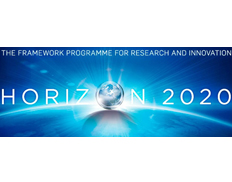Share
Print

19 April 2016 16:20
An overview of the following evaluation results (flash call info) is now available
under the tab Topic conditions and documents:
The number of proposals submitted for this topic: EeB-02=5
For FOF and SPIRE topics see here
| Topic identifier: | EEB-02-2016 | ||
| Publication date: | 14 October 2015 | ||
| Types of action: | CSA Coordination and support action | ||
| DeadlineModel: Opening date: |
single-stage 15 October 2015 |
Deadline: | 21 January 2016 17:00:00 |
| Time Zone : (Brussels time) | |||
The construction sector is a key player in the efforts to decarbonise the European economy with the goal to drastically reduce energy consumption and decrease CO2 emissions. Key Performance Indicators, along with appropriate methodologies and tools are crucial in order to quantify and benchmark the energy-efficiency and the environmental quality at building and district level. Adequate monitoring and management techniques are also needed, mixing results and practices from the building sector together with other relevant sectors like energy grid to ensure an effective performance improvement both at building and district level.
Scope:Proposals should focus on solutions beyond the state of the art, which will improve and provide a feedback on the experiences on energy efficiency and environmental quality from the latest generation of new and renovated buildings and their interactions in districts.
Proposals should focus on the following main objectives:
The Commission considers that proposals requesting a contribution from the EU between EUR 500000 and 750000 would allow this specific challenge to be addressed appropriately. Nonetheless, this does not preclude submission and selection of proposals requesting other amounts.
No more than one action will be funded.
Expected Impact: